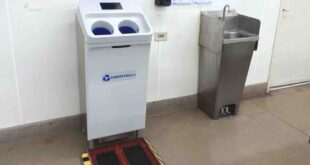The key difference between preventive maintenance and predictive maintenance is that the latter means completing maintenance only when needed, as opposed to scheduled intervals. With Industry 4.0, manufacturing data will allow us to gradually replace preventive maintenance with predictive maintenance, but can we go further than this? Miron Shtiglitz forecasts a future where data from inspection not only underpins maintenance schedules, but informs the very design of the product itself
Anyone familiar with Industry 4.0 has likely encountered the concept of predictive maintenance. By harnessing the data from machine sensors, we can more accurately predict when maintenance activity is actually required, rather than preserving with the fixed schedules typical of preventive maintenance. Optimising maintenance schedules this way means reduced labour and material costs, or so the theory goes.
Many companies are making great strides in this field and we are more accurately predicting machine health. In my home country of Israel, Augury is a good example of a company working in this area. You build a sensor that is attached to a machine, it collects data on parameters like sound and vibration and uses this data to predict when you need to carry out maintenance.
We have also seen some companies try to do this with cars. By listening to the noises the car makes, you can potentially determine what fault is likely to occur and take preventive action before it is too late.
Level two and three
The data gathered from inspection systems could form an additional layer to this approach. With AI, the data gathered from these intelligent inspection systems could be correlated with data from predictive maintenance technologies.
For example, we might find correlations between the quality of a product and the last time scheduled maintenance activity was performed. In order to make this approach viable, you need very large volumes of data. However, as we enter the era of Big Data, this additional layer opens new possibilities.
Looking slightly further ahead, the data gathered from quality inspection systems and the software that supports them will not only enhance the power of predictive maintenance, it will shape the design of the product itself. By using data to make the correct decisions during the design phase, we can reduce the risk of defects further along.
Imagine, for example, you are able to analyse correlations between the 3D structure of a part, the processes that take place during its manufacture, and the potential for certain defects to result in this scenario. Using this, you can help the mechanical designer make optimal decisions based on the data.
The data could also help design engineers explore different options and their suitability. For example, let’s say an engineer wants to design a part that is thinner in a specific area and use a specific material for this purpose. Using data from other inspected parts, you might extrapolate that using material x at this particular level of thickness leads to an increased incidence of defects, or using a particular process in combination with this material makes it more prone to break.
Although further away, this is a possibility that engineers and AI specialists are already talking about. It is sometimes referred to as the ‘expert system’ and is similar to the Artificial General Intelligence (AGI) that you read about in media headlines.
As we move beyond the first level of predictive maintenance toward multi-sensor approaches, the world of Big Data will open exciting possibilities. However, this next step is not the final chapter in the story. While we keep one foot planted in the present, we can still imagine a future where intelligent systems not only harness data to optimise maintenance activity, but are capable of fundamentally reshaping the manufacture of the product itself.
Miron Shtiglitz is VP for Product and Delivery at quality inspection specialist QualiSense.
 Engineer News Network The ultimate online news and information resource for today’s engineer
Engineer News Network The ultimate online news and information resource for today’s engineer



